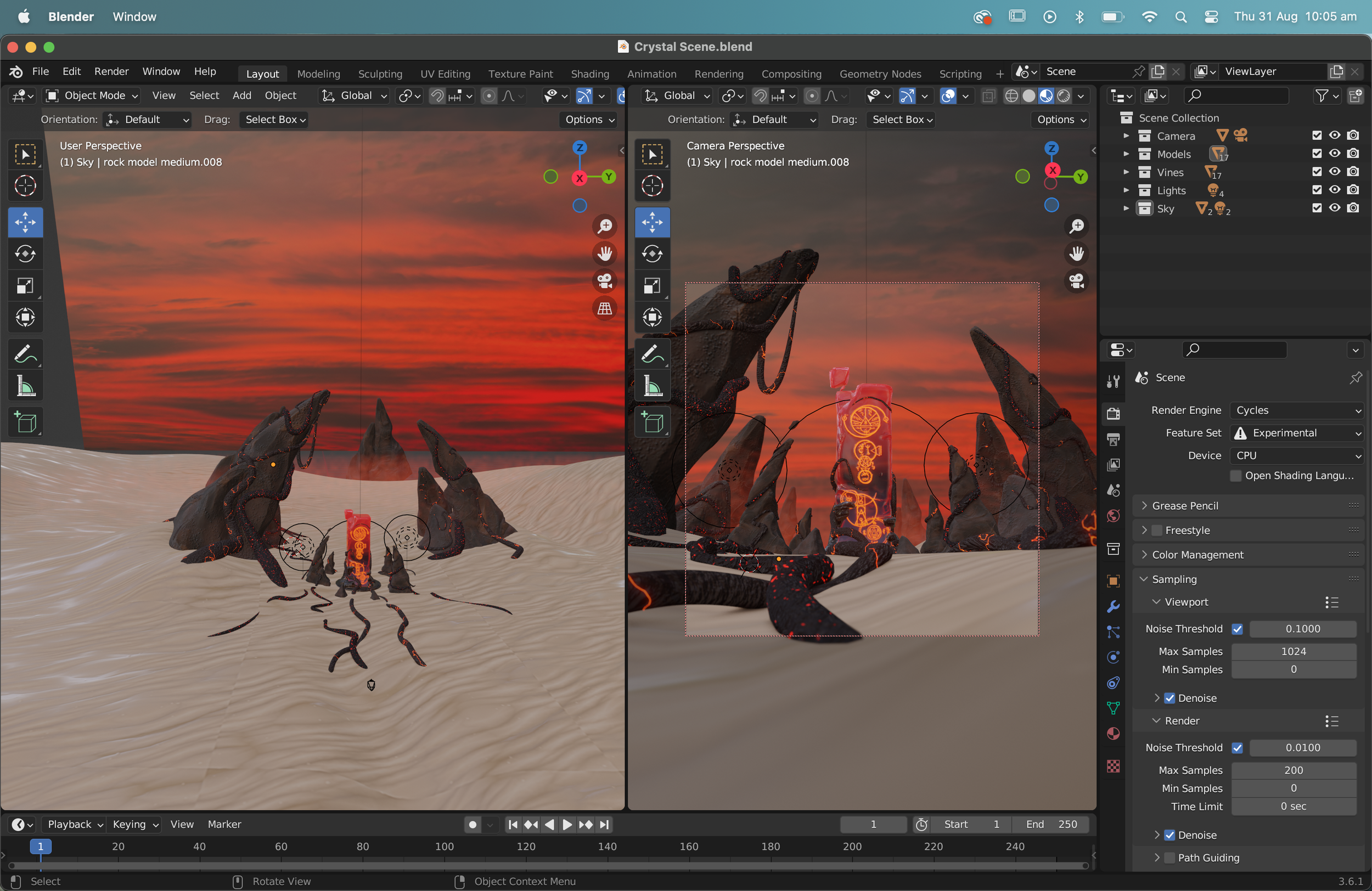
At the center of a wasteland filled with Arcane and Eldritch power sits a portal to another world. Over the centuries life from the other side of this portal has gradually seeped into the wasteland, polluting it with otherworldly flora and fauna. The denizens of this wasteland have gradually developed ways how to utilise the strange effects of the portal, such as training the wildlife and harvesting crystals. The Rift Crystals are one by-product of the portals influence, allowing the denizens of the wasteland to harness the power of the world beyond the portal through strange rituals. The Portal along with the Rift Crystals harness reality warping effects which causes the environment that surrounds them to become warped and corrupted.
I wanted to explore different shapes and concepts for crystals and obelisks that have dark and otherworldly tones. I liked the look of the fractured crystal with the floating remnants so wanted to include this in the design. I was also looking for examples of desert landscapes and dry environments which will help influence the design of the surrounding environment and textures.
The thumbnails I drew where to expand on the surrounding environment and depict a traveller wandering through the wasteland. As I began developing the concept art for the model itself I started off with thumbnails which could allow me to experiment with different shapes. As the concept developed I wanted to depict the surrounding environment being warped by the crystal, so I experimented with the surrounding rocks and vines being bent by the crystal and growing across its surface.
I began the process by blocking out the models base shapes and setting up the proportions. I then exported these separately and loaded them in Zbrush where I began sculpting the model.
During the modelling process I took the model into Zbrush and began to sculpt the model to look like roughly carved rock and a crystal.
During the sculpting process I drew the symbols in Photoshop and brought them into Zbrush as an‘Alpha’ which is essentially a custom brush that allowed me to draw these symbols on the model in a time efficient manner.
Once moving onto the texturing phase of development I took the model into Substance Painter where I baked the detail from the high-poly model onto the low-poly model. This allowed me to keep all my sculpted detail one a model that is optimised for performance.
During the development process of the crystal I used an Emissive map which allows for the crystal to glow. I used this on the symbols as well as the rest of the crystal.
On the stone parts of the model I developed a dark stone material which I saved in substance painted, this allowed me to apply this texture to the surrounding rocks, where i was able to tweak the setting to fit the new models.
When i took the models into Blender I created a basic material for the vines. This was made using Blenders in build shader, and I developed a materiel using nodes. I created a duplicate version of this and changed the texture node to get the different patterns.
I developed a procedural texture for the sand which I did in Substance Designer. Using nodes to build up the texture it utilises the hight channel to bring out the curves in the sand and I was able to tweak this in Substance Designers and later in Blender when I applied it to the model.
Most of the nodes are used to create the curves in the sand using different nodes, and these are put into the hight node. Using a gradient map node I was able to build up the colours for the sand and plugged that into the colour channel.
Because the scene is taken from one shot that pans towards the camera I downloaded a stock image of a sky. This creates the look of a larger background without having to use more power simulating clouds.
To create atmospheric perspective I created fog, which can be created in Blender through adding a texture to a Volumetric Shader. I used the eyedropper to select the colour of the fog which gives it a red colour. This helped it fit with the scene better.























